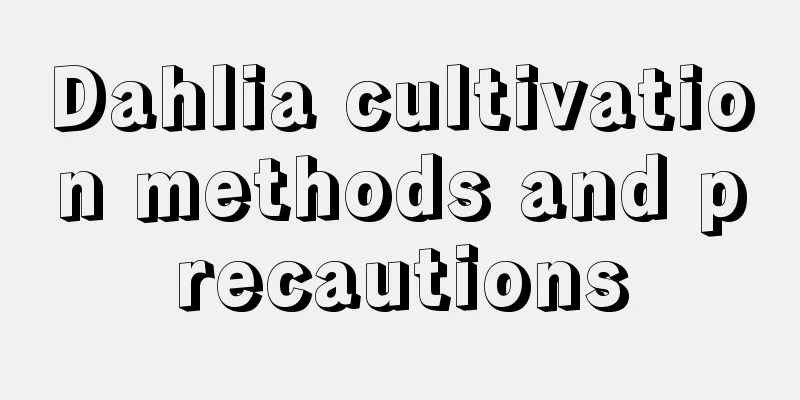Dahlia cultivation methods and precautions

1. SoilWhen growing dahlias, its environmental requirements must be fully met. It should have well-drained sandy loam and generally be equipped with nutrient soil that meets its needs. Usually, five parts of garden soil, two parts of leaf mold, two parts of sand and one part of decomposed organic fertilizer are mixed to meet its soil requirements. 2. LightDahlias require relatively sufficient light because they are long-day flowers. An overly dark environment will cause the dahlias to grow too tall and bloom poorly, affecting the normal growth of the plant. 3. WaterDahlias require the soil to remain slightly moist, neither too dry nor too wet. If it is summer, you must also pay attention to drainage after rain to prevent water accumulation from damaging the root system. 4. FertilizationDahlias require sufficient fertilizer. Generally speaking, when planting bulbs in early spring, it is necessary to apply sufficient amount of decomposed organic fertilizer into the planting pots or soil as base fertilizer. During the growing season, apply a thin layer of liquid fertilizer every 10 days or so. 5. TemperatureDahlia is a plant that is afraid of both cold and heat. Generally speaking, when the temperature at night is below 10℃, you must take measures to prevent cold, and when the temperature at noon reaches above 25℃, you must prepare to take measures to prevent heatstroke and cool down. The ideal growth temperature is between 15℃-25℃, so that it can grow better. 6. Notes1. During the maintenance process, pay attention to avoid sun exposure in summer and water accumulation after rain. Dahlias are susceptible to a large number of diseases and pests, so they must be observed at all times during maintenance and controlled in the early stages to avoid unnecessary damage. 2. Dahlias are relatively tall and have heavy flower heads, and may fall over due to weather or human factors during the maintenance process. Generally, it is necessary to use pillars to support it in the middle and late stages of its growth. At the same time, because its root system is relatively large, it is best to bury the support pillars in the soil when the bulbs are planted, so as to avoid damage to the dahlia's root system when setting up the support pillars later, and even cause the bulbs to die. |
>>: Is Blue Snowflake Extraordinary Bluer?
Recommend
How many kilograms of garlic are usually produced per mu? How many kilograms are normally needed to grow one mu of land?
Garlic yield per mu The yield of garlic from diff...
10 Lucky Flowers
1. Anthurium Anthurium is a highly ornamental flo...
Cultivation methods and precautions of Verbena
1. Loosen the soil Verbena is an easy flower to g...
How many days does Shanghai greens grow?
There are four stages in the growth process of Sh...
Greenhouse fungus cultivation technology and management Greenhouse fungus cultivation method and time
Auricularia auricula is also called as radish and...
Hydroponic Asparagus fern
1. Hydroponic method of asparagus fern 1. Plant p...
The flower language and legend of ground lotus
Legend of the Golden Lotus Legend has it that whe...
When does the desert rose bloom?
1. Which month does it bloom? This plant blooms t...
How to grow Staghorn fern
1. Soil preparation Because it is an epiphytic pl...
Rose transplanting time and method, the best time and precautions for transplanting
Rose is a very common and common plant. Rose usua...
Can fuchsia be planted in the ground?
Can fuchsia be planted in the ground? Fuchsia can...
When to plant red cabbage?
Red cabbage is a cold-resistant annual or biennia...
Does Red Carnation have seeds? How to plant it?
1. Are there seeds? Amaranthus is also called ivo...
How to grow random grass
1. Maintenance methods 1. Temperature: 18 to 28 d...
The correct way to water azaleas and how to manage them in winter
1. Watering method 1. Water quality: When waterin...









